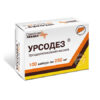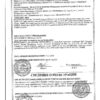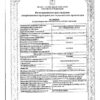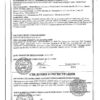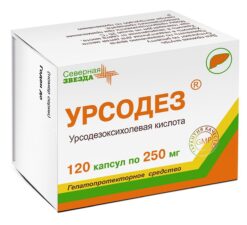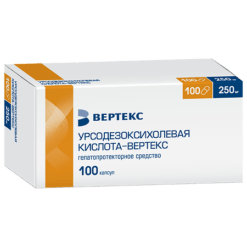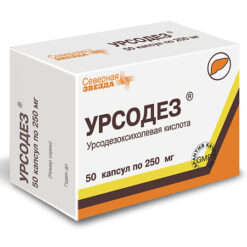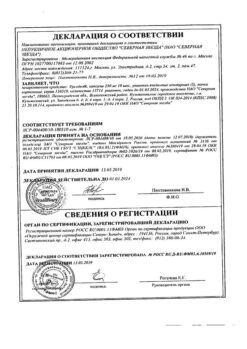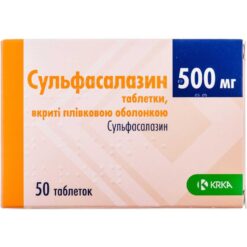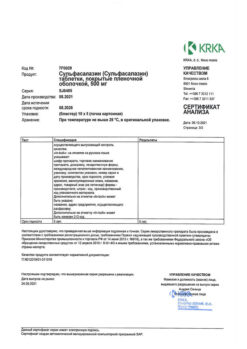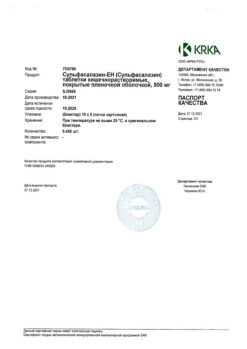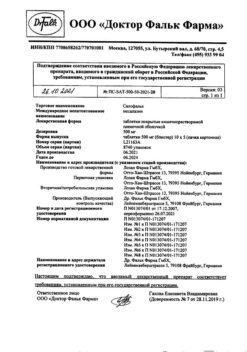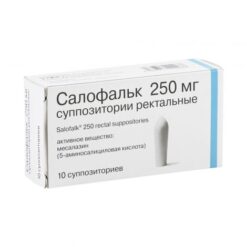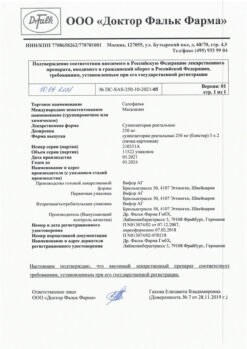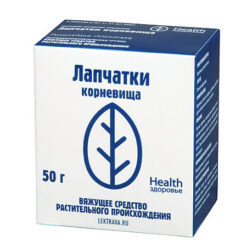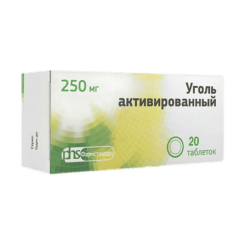No products in the cart.
Ursodez, capsules 250 mg 100 pcs
€1.00
Out of stock
(E-mail when Stock is available)
Description
Pharmacotherapeutic drug group:
Hepatoprotective agent
ATX code: [A05AA02]
Pharmacological properties
Pharmacodynamics
Hepatoprotective drug, has a choleretic effect. It reduces the synthesis of cholesterol in the liver, its absorption in the intestine and its concentration in the bile, increases the solubility of cholesterol in the biliary system, stimulates the formation and excretion of bile.
Lithogenicity of bile decreases, increases the content of bile acids in it; causes intensification of gastric and pancreatic secretion, increases lipase activity, has hypoglycemic effect. Causes partial or complete dissolution of cholesterol stones in enteral administration, reduces the saturation of bile with cholesterol, which promotes the mobilization of cholesterol from gallstones.
It has immunomodulatory effects, affects immunological reactions in the liver: decreases the expression of some antigens on the membrane of hepatocytes, affects the number of T-lymphocytes, interleukin-2 formation, decreases the number of eosinophils.
Pharmacokinetics
Ursodeoxycholic acid (UDCA) is absorbed in the small intestine by passive diffusion (about 90%) and in the ileum by active transport. After oral administration in a single dose (500 mg), maximum serum concentration (Cmax) after 30, 60, 90 min is 3.8, 5.5, 3.7 mmol/l, respectively. The binding to plasma proteins is high – up to 96-99%.
It penetrates through the placental barrier. With systematic administration of ursodeoxycholic acid becomes the main bile acid of blood serum (48% of total bile acids). The therapeutic effect of the drug depends on the concentration of UDCA in bile.
It is metabolized in the liver (clearance by “primary passage” through the liver) into taurine and glycine conjugates. The resulting conjugates are secreted into the bile. About 50-70% of the total dose is excreted through the intestine. A small amount of unabsorbed ursodeoxycholic acid enters the large intestine, where it undergoes cleavage by bacteria (7-dehydroxylation); the resulting lithocholic acid is partially absorbed from the colon, but is sulfated in the liver and rapidly excreted as sulfolithocholylglycine or sulfolithocholyltaurine conjugate.
Indications
Indications
Dissolution of cholesterol gallstones;
primary biliary cirrhosis in the absence of signs of decompensation (symptomatic therapy);
biliary reflux gastritis;
chronic hepatitis of various origins;
primary sclerosing cholangitis;
cystic fibrosis (cystic fibrosis);
non-alcoholic steatohepatitis;
alcoholic liver disease;
biliary dyskinesia.
Pharmacological effect
Pharmacological effect
PHARMACOTHERAPEUTIC GROUP OF THE DRUG:
Hepatoprotective agent
ATH CODE: [A05AA02]
PHARMACOLOGICAL PROPERTIES
Pharmacodynamics
Hepatoprotective agent, has a choleretic effect. Reduces cholesterol synthesis in the liver, its absorption in the intestines and concentration in bile, increases the solubility of cholesterol in the biliary system, stimulates the formation and secretion of bile.
Reduces the lithogenicity of bile, increases the content of bile acids; causes increased gastric and pancreatic secretion, enhances lipase activity, and has a hypoglycemic effect. Causes partial or complete dissolution of cholesterol stones when administered enterally, reduces the saturation of bile with cholesterol, which promotes the mobilization of cholesterol from gallstones.
It has an immunomodulatory effect, affects immunological reactions in the liver: it reduces the expression of certain antigens on the hepatocyte membrane, affects the number of T-lymphocytes, the formation of interleukin-2, and reduces the number of eosinophils.
Pharmacokinetics
Ursodeoxycholic acid (UDCA) is absorbed in the small intestine by passive diffusion (about 90%) and in the ileum by active transport. After oral administration in a single dose (500 mg), the maximum concentration in the blood serum (Cmax) after 30, 60, 90 minutes is 3.8, 5.5, 3.7 mmol/l, respectively. The connection with plasma proteins is high – up to 96-99%.
Penetrates through the placental barrier. When taken systematically, ursodeoxycholic acid becomes the main bile acid in the blood serum (48% of the total bile acid content). The therapeutic effect of the drug depends on the concentration of UDCA in bile.
Metabolized in the liver (first pass clearance through the liver) into taurine and glycine conjugates. The resulting conjugates are secreted into bile. About 50-70% of the total dose is excreted through the intestines. A small amount of unabsorbed ursodeoxycholic acid enters the large intestine, where it is broken down by bacteria (7-dehydroxylation); the resulting lithocholic acid is partially absorbed from the colon, but is sulfated in the liver and quickly excreted in the form of sulfolithocholylglycine or sulfolitocholyltaurine conjugate.
Special instructions
Special instructions
In case of cholelithiasis, the effectiveness of treatment is monitored every 6 months by conducting an X-ray examination and ultrasound of the biliary tract in order to prevent relapses of cholelithiasis. In case of cholestatic liver diseases, the activity of transaminases, alkaline phosphatase and GGTP in the blood serum should be periodically determined.
Influence on the ability to drive vehicles and operate machinery. There is no data on the effect of UDCA on the ability to drive vehicles and operate machinery.
Active ingredient
Active ingredient
Ursodeoxycholic acid
Composition
Composition
1 capsule contains:
active substance:
ursodeoxycholic acid – 250 mg,
excipients:
pregelatinized starch (starch 1500) – 73.0 mg,
colloidal silicon dioxide (Aerosil) – 5.0 mg,
magnesium stearate – 2.0 mg,
capsule shell:
titanium dioxide,
gelatin
Pregnancy
Pregnancy
The drug is contraindicated during pregnancy and lactation.
Contraindications
Contraindications
Hypersensitivity to the components of the drug Ursodez;
X-ray positive (high calcium) gallstones;
non-functioning gallbladder;
acute inflammatory diseases of the gallbladder, bile ducts and intestines;
liver cirrhosis in the stage of decompensation;
severe dysfunction of the liver, kidneys, pancreas;
pancreatitis;
pregnancy;
lactation period;
adults and children weighing up to 34 kg.
Side Effects
Side Effects
Diarrhea, nausea, pain in the epigastric region and right hypochondrium, calcification of gallstones, increased activity of liver transaminases, allergic reactions.
Interaction
Interaction
Cholestyramine, colestipol and antacids containing aluminum hydroxide or smectite (aluminum oxide) reduce the absorption of UDCA in the intestine and thus reduce its absorption and effectiveness. If the use of drugs containing at least one of these substances is still necessary, they should be taken at least 2 hours before taking Ursodez.
UDCA may enhance the absorption of cyclosporine from the intestine. Therefore, in patients taking cyclosporine, the physician should check the concentration of cyclosporine in the blood and adjust the dose of cyclosporine if necessary.
In some cases, Ursodez may reduce the absorption of ciprofloxacin. Lipid-lowering drugs (especially clofibrate), estrogens, neomycin or progestins increase the saturation of bile with cholesterol and may reduce the ability to dissolve cholesterol gallstones.
Overdose
Overdose
No cases of overdose have been identified. In case of overdose, symptomatic treatment is carried out.
Storage conditions
Storage conditions
In a dry place, protected from light, at a temperature not exceeding 25 °C
Shelf life
Shelf life
5 years
Manufacturer
Manufacturer
North Star NAO, Russia
Additional information
| Shelf life | 5 years |
|---|---|
| Conditions of storage | In a dry, light-protected place at a temperature not exceeding 25 °C |
| Manufacturer | North Star NAO, Russia |
| Medication form | capsules |
| Brand | North Star NAO |
Other forms…
Related products
Buy Ursodez, capsules 250 mg 100 pcs with delivery to USA, UK, Europe and over 120 other countries.





